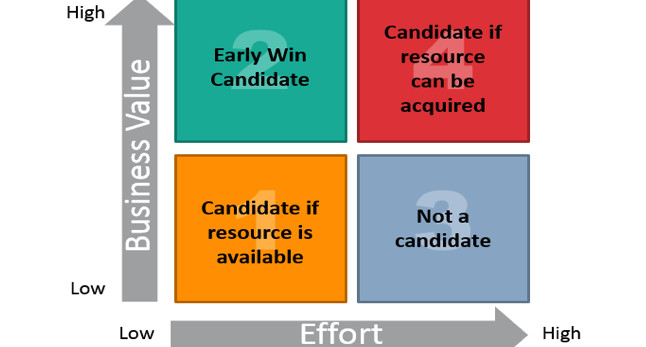
Create a PayOff Prioritization Matrix to Organize Your Projects
Excerpt from the original article published on StrategicQuadrant.com. See full article here.
Regardless of the type of business you’re running or even the industry you’re operating in, so much of your success on a daily basis comes down to your ability to make quick, effective decisions at a moment’s notice.
Equally important is your ability to see the “bigger picture” - how does that seemingly small decision you’re making on a project today affect you and your team tomorrow, next week or even a year from now? How does it help you not only mitigate risk but deliver a higher quality end product to your clients? How does it make sure that today’s business capabilities stay aligned with tomorrow’s business objectives?
Do you currently have the level of insight you need to know the answers to these questions in the first place?
Analysis Paralysis, or: The Trouble With Data
For most organizations, this creates a series of problems almost immediately. It’s now harder, not easier, to make actionable and informed decisions because you’ve got too much to consider. Too much to focus on. It’s more difficult to see what needs to be an immediate priority and what can wait. It makes productivity harder, because keeping everyone on the same page is now a huge challenge - to say nothing of how difficult things become when you’ve got teams of employees working in the field or remotely.
It’s important to note that overcoming these challenges isn’t just about your ability to make the most out of the time you have available to you - it’s about making the most out of opportunities as they develop. It’s about finding new ways for your employees to work smarter, not harder - increasing the ease at which they can collaborate with one another, yet still improve traceability and accountability on behalf of managers.
By giving you and your teams a better way to prioritize tasks based on what they require in terms of time, energy and talent, along with where they fall in the larger picture that is your business, you instantly usher in an environment where collaboration gives way to productivity which gives way to ultimate success at the exact same time.
What Is a Priority Matrix? Breaking It Down
At its core, a priority matrix is a tool used to enable business architects to create, organize and evaluate everything from organization charts to operating models to business capability models and more. Using the data that you and your teams are already creating, a prioritization matrix allows you to effortlessly prioritize your data via heat mapping to gain superior visibility over not only the situation at hand, but how decisions today will affect you as a collective down the road.
It’s the perfect opportunity to put the principles of SWOT analysis to work for your benefit - it lets you see the internal strengths and weaknesses of the task at hand, all while uncovering external opportunities and even potential issues that you may not have considered.
But the most important thing about a priority matrix framework is that it’s flexible. It lets you quickly organize your data elements in lists to support your existing workflow, not replace it. It’s about putting your data to work for you and your teams, as opposed to being forced to change the way you operate in an attempt to make the most of your data.
Using a business framework like a payoff matrix allows you to see mission-critical context, often for the first time. It’s now possible to benchmark today’s operating model against not only best-in-class past performance, but best-in-class in terms of the incredibly fluid “new normal” at the same time. This allows you to measure the future readiness of your entire operating model from the top down, opening the door for metrics like cost reduction and controllership in addition to simple effectiveness.
Read the full article here.
- Please like, share, and comment this article
- Sign up your FREE account today to start using Strategic Quadrant.